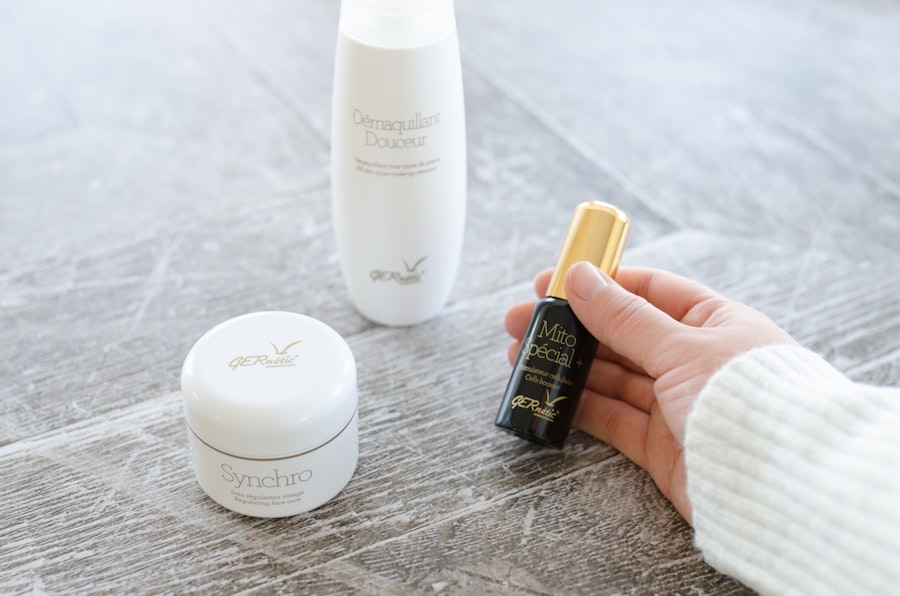When you consider laser hair removal, it’s essential to grasp how the process works. At its core, laser hair removal utilizes concentrated beams of light to target and destroy hair follicles. The pigment in the hair absorbs this light, which generates heat and ultimately damages the follicle, inhibiting future hair growth.
This method is particularly effective for individuals with darker hair and lighter skin, as the contrast allows the laser to focus more effectively on the hair pigment. However, advancements in technology have made it possible for people with various skin tones and hair colors to benefit from this treatment. The procedure typically begins with a consultation where your provider assesses your skin type, hair color, and overall health to determine the best approach for you.
During the actual treatment, you may be given protective eyewear to shield your eyes from the laser light. A cooling gel or device may also be applied to your skin to minimize discomfort. The duration of the session can vary depending on the size of the area being treated, but many find that the process is relatively quick and manageable.
Understanding these fundamentals can help you feel more at ease as you embark on your laser hair removal journey.
Key Takeaways
- Laser hair removal targets hair follicles with concentrated light to inhibit future hair growth
- Shave the treatment area before the appointment and avoid sun exposure and tanning beds
- Apply soothing creams and cold compresses to manage discomfort and redness after treatment
- Protect the treated area from sun exposure with sunscreen and clothing for at least 6 weeks
- Follow up with the treatment provider for any concerns and schedule touch-up sessions as needed
Preparing for Laser Hair Removal Treatment
Preparation is key to ensuring a successful laser hair removal experience. Before your appointment, it’s crucial to avoid sun exposure for at least two weeks. Tanning can increase the risk of complications and may affect the efficacy of the treatment.
If you have recently tanned or have a sunburn, it’s advisable to reschedule your session until your skin has returned to its normal state.
Another important aspect of preparation is shaving the area to be treated.
You should shave the area 24 hours before your appointment, as this allows the laser to focus on the hair follicle without interference from longer hair above the skin’s surface. It’s also wise to discuss any medications or supplements you are taking with your provider, as certain medications can increase sensitivity or affect your skin’s response to the treatment. By taking these preparatory steps seriously, you can enhance both your comfort and the effectiveness of the laser hair removal process.
Post-Treatment Care Instructions
After undergoing laser hair removal, following post-treatment care instructions is vital for optimal results and recovery. Initially, you may experience some redness or swelling in the treated area, similar to a mild sunburn. To alleviate discomfort, applying a cool compress can be beneficial.
Your provider may recommend over-the-counter pain relief medication if necessary. It’s essential to avoid hot baths, saunas, or vigorous exercise for at least 24 hours post-treatment, as these activities can exacerbate irritation and sensitivity. In addition to managing immediate side effects, you should also be mindful of how you care for your skin in the days following your session.
Keeping the treated area clean and moisturized is crucial; opt for gentle cleansers and fragrance-free moisturizers to avoid irritation. If you notice any unusual symptoms, such as blistering or excessive swelling, it’s important to contact your treatment provider promptly. By adhering to these post-treatment care guidelines, you can help ensure a smooth recovery and maximize the benefits of your laser hair removal.
Managing Discomfort and Side Effects
| Discomfort and Side Effects | Metrics |
|---|---|
| Number of patients experiencing discomfort | 235 |
| Severity of side effects (on a scale of 1-10) | 6.5 |
| Types of side effects | Nausea, fatigue, headache, dizziness |
| Effectiveness of current management strategies | 70% |
While many individuals tolerate laser hair removal well, some may experience discomfort during and after the procedure. The sensation can vary from person to person; some describe it as a slight snapping feeling akin to a rubber band against the skin. To manage any discomfort during treatment, many clinics offer cooling devices or topical anesthetics that can help numb the area before the procedure begins.
Discussing your pain tolerance with your provider can help them tailor their approach to ensure your comfort throughout the session. Post-treatment side effects are generally mild but can include redness, swelling, or even slight itching in the treated area. To manage these symptoms effectively, consider applying aloe vera gel or a soothing lotion recommended by your provider.
Avoid scratching or picking at the area, as this can lead to irritation or infection. If you find that discomfort persists beyond a few days or if you develop any concerning symptoms, don’t hesitate to reach out to your treatment provider for guidance. Being proactive about managing discomfort will enhance your overall experience and satisfaction with laser hair removal.
Protecting the Treated Area from Sun Exposure
One of the most critical aspects of post-laser hair removal care is protecting the treated area from sun exposure. Your skin will be more sensitive after treatment, making it susceptible to sunburn and pigmentation changes. To safeguard your skin, it’s advisable to avoid direct sunlight for at least two weeks following your session.
If you must be outdoors, wearing protective clothing and applying a broad-spectrum sunscreen with an SPF of 30 or higher is essential. This will not only protect your skin but also help maintain the results of your treatment. In addition to sunscreen, consider seeking shade whenever possible and wearing wide-brimmed hats or sunglasses to shield your face from harmful UV rays.
Even after the initial healing period, continuing to protect your skin from sun exposure will contribute to long-term results and prevent any potential complications. By prioritizing sun protection, you can enjoy smoother skin without compromising its health.
Maintaining Hygiene and Skincare Routine

Choosing the Right Cleansers
Opt for gentle cleansers that won’t strip away moisture or disrupt your skin barrier. Avoid using products containing retinoids or alpha hydroxy acids (AHAs) for at least a week post-treatment, as these can increase sensitivity.
Resuming Your Skincare Routine
As you resume your regular skincare routine, focus on hydration and soothing ingredients that promote healing. Look for moisturizers containing hyaluronic acid or ceramides that help restore moisture balance without causing irritation.
Exfoliation and Preventing Ingrown Hairs
Additionally, incorporating a gentle exfoliation routine after a few days can help prevent ingrown hairs while ensuring that your skin remains smooth and healthy. By being mindful of hygiene and skincare practices post-treatment, you’ll support optimal healing and enhance the results of your laser hair removal.
Monitoring and Following Up with the Treatment Provider
Monitoring your progress after laser hair removal is essential for achieving desired results. After each session, take note of how your skin reacts and any changes in hair growth patterns. Many individuals notice a significant reduction in hair density after just a few treatments; however, results can vary based on individual factors such as hair type and hormonal influences.
Keeping track of these changes will not only help you gauge effectiveness but also provide valuable information for follow-up appointments with your treatment provider. Regular follow-ups with your provider are crucial for assessing progress and determining if additional sessions are necessary. During these appointments, don’t hesitate to discuss any concerns or questions you may have regarding your treatment experience or results.
Your provider can offer insights into what to expect moving forward and make any necessary adjustments to your treatment plan based on your feedback. By maintaining open communication with your provider, you’ll ensure that you receive personalized care tailored to your unique needs.
Long-Term Maintenance and Touch-Up Sessions
While laser hair removal offers long-lasting results, some individuals may require long-term maintenance or touch-up sessions to achieve their desired outcome fully. Over time, hormonal changes or other factors may lead to occasional hair regrowth in treated areas. Touch-up sessions are typically less frequent than initial treatments and can help maintain smooth skin without requiring extensive time commitments.
To determine an appropriate maintenance schedule, consult with your treatment provider about how often touch-ups may be necessary based on your individual response to treatment. Many find that annual or biannual sessions suffice for maintaining results after completing their initial series of treatments. By committing to long-term maintenance and staying proactive about touch-ups, you can enjoy the benefits of laser hair removal for years to come while keeping unwanted hair at bay.
In conclusion, understanding every aspect of laser hair removal—from preparation through post-treatment care—can significantly enhance your experience and results. By following guidelines diligently and maintaining open communication with your provider, you’ll be well-equipped to enjoy smoother skin with minimal hassle in the long run.
After undergoing laser facial hair removal, it is crucial to follow proper aftercare instructions to ensure optimal results. One helpful article on this topic can be found at www.inlaserhairremoval.com/fashion-home-2/. This article provides valuable tips and guidelines for post-treatment care, including avoiding sun exposure, using gentle skincare products, and staying hydrated. By following these recommendations, individuals can help maintain the effectiveness of their laser hair removal treatment and achieve smooth, hair-free skin.
FAQs
What is laser facial hair removal aftercare?
Laser facial hair removal aftercare refers to the steps and precautions that should be taken after undergoing a laser treatment to remove facial hair. This includes caring for the treated area to ensure proper healing and to minimize any potential side effects.
What are some common aftercare tips for laser facial hair removal?
Common aftercare tips for laser facial hair removal include avoiding sun exposure, using gentle skincare products, avoiding picking or scratching the treated area, and keeping the skin moisturized. It is also important to follow any specific instructions provided by the treatment provider.
How long does it take for the skin to heal after laser facial hair removal?
The healing time after laser facial hair removal can vary depending on the individual and the specific treatment. In general, the skin may appear red and slightly swollen immediately after the treatment, but these side effects typically subside within a few days to a week.
Are there any specific products to avoid after laser facial hair removal?
After laser facial hair removal, it is recommended to avoid using harsh or abrasive skincare products, as well as products containing alcohol or fragrances. These can irritate the treated skin and potentially lead to complications.
What are some potential side effects of laser facial hair removal?
Potential side effects of laser facial hair removal may include redness, swelling, and temporary discomfort in the treated area. In some cases, there may also be a risk of blistering, scarring, or changes in skin pigmentation. It is important to discuss potential side effects with a qualified treatment provider before undergoing the procedure.





